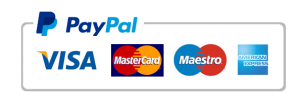Policy memo ground water quality or quantity
This paper focuses on Policy memo on Wisconsin’s ground water quality or quantity. What, if anything, should Rep. Katrina Shankland do next about Wisconsin’s groundwater quality or quantity?
Policy memo on Wisconsin’s ground water quality or quantity
Firstly, What, if anything, should Rep. Katrina Shankland do next about Wisconsin’s groundwater quality or quantity?
Secondly, You are a policy intern in the office of Rep. Katrina Shankland. In 2019, Assembly Speaker Robin Vos appointed Rep. Katrina Shankland to co-chair the Speaker’s Task Force on Water Quality (Links to an external site.).
This Task Force recently proposed a set of laws that gained bipartisan support. Rep. Katrina Shankland wants to know where to direct the attention and resource of her office (and perhaps the entire legislature) next. Rep. Shankland represents a mostly rural area where groundwater quantity and quality are increasingly perceived as problems.
Further, Your assignment as a policy analyst is to write a 4-page (double spaced, 12 pt font, and 1-inch margins) memo to Rep. Shankland analyzing policy options to address the next piece of the groundwater problem.
Moreover, Based on research into initiatives proposed by scholars or tried in other, similar states and using the authorities of the Wisconsin legislature (with the agenda-setting power of Rep. Shankland’s co-chair position and constraints of being part of the minority party), recommend one action Rep. Shankland should within her role as legislator and task force co-chair,
This requires at least five kinds of research:
(1) Firstly, What is the WI legislature and Speaker’s Task Force on Water Quality currently doing in this policy area?
(2) Secondly, What are some additional possible policy options that have been proposed by scholars or used by other state governments to address similar problems?
(3) Thirdly, What evidence do we have about how well these options address the policy problem?
(4) Fourthly, What authority does the WI legislature have to implement these options?
(5) Further, What stakeholder interests must Rep. Shankland consider. Also, how do they enable or constrain Rep. Shankland’s ability to initiate, enact, and implement these options?
Remember, Research is a major part of this assignment (even though the result is short) because the challenge is to tell a policymaker something they do not already know. This requires digging up new information, new policy ideas, or new evidence that may be relevant to their decisions.
After some general research into current initiatives and potential options, you will want to focus on one very specific problem. Finally, The narrower your initial focus, the easier it will be to identify relevant research and authorities.
IMPORTANT: FOLLOW THE POLICY MEMO TEMPLATE AND INSTRUCTIONS:
https://judgelord.github.io/PS272/memos.html

